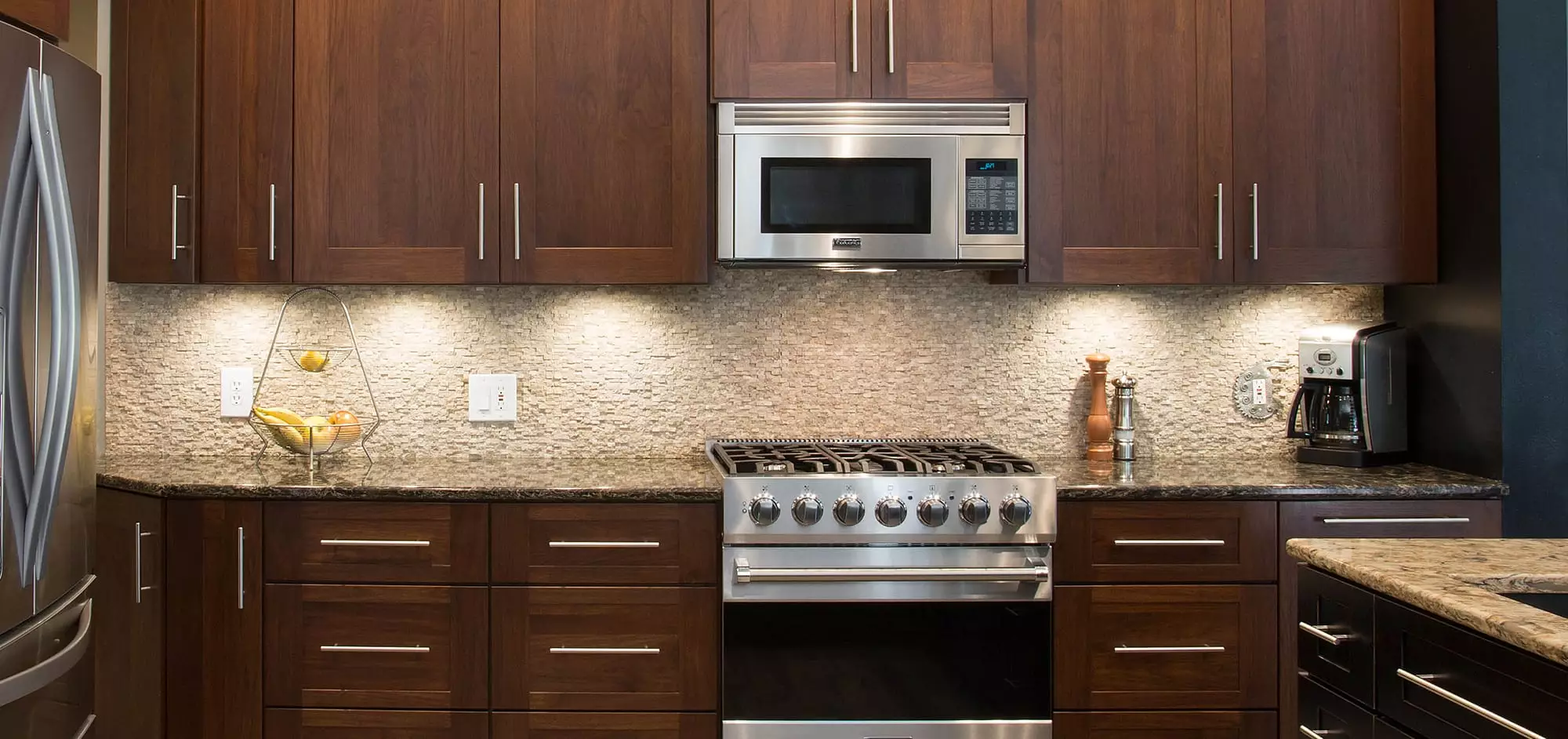
Few things are as frustrating as cooking food and entertaining guests in a poorly lit kitchen. If you believe your space needs an upgrade, don’t worry—this blog has you covered.
Proper lighting elevates your kitchen’s looks and boosts its functionality. Even better, such improvements don’t have to break the bank. So, transform your kitchen lighting with these budget-friendly tips to turn your food preparation area into a stylish, safe, and efficient space:
- Understand ambient lighting
- Harness task lighting
- Elevate with accent lighting
- Add smart and modern features
- Plan your lighting layout
Tip #1: Understand Ambient Lighting
What Is Ambient Lighting?
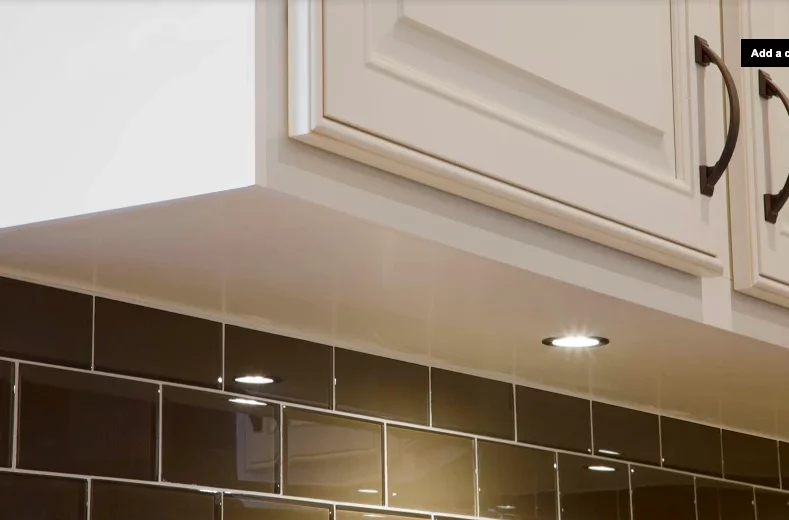
If you’ve ever wondered why your kitchen seems dull despite having bright overhead lights, it might just need to change your ambient lighting.
In a nutshell, ambient lighting is the overall level of indirect lighting in a room. One or more ceiling fixtures commonly provide primary illumination, brightening the space for visible movement. The ambient lighting you use can affect the mood and atmosphere of the space—for example, a super-bright ceiling lamp can create an environment that feels harsh and sterile, while a ceiling lamp that does not emit sufficient brightness can make a space feel dull and dark.
Popular Ambient Lighting Options
No one wants to spend time in a dull or boring kitchen, so try out these options to set a warm mood in your workspace.
- Chandeliers & Pendants: These statement fixtures hang overhead and are a perfect addition above islands and dining tables to make mealtime more inviting.
- Recessed LED Downlights: Recessed lights are a minimalistic, low-profile way to brighten corners without protruding fixtures or bulky lamps.
- Track Lighting: Track lights typically swivel and can be directed toward specific zones in a room, providing much-needed illumination for key areas like kitchen sinks, cabinets, and counters.
Tip #2: Harness Task Lighting
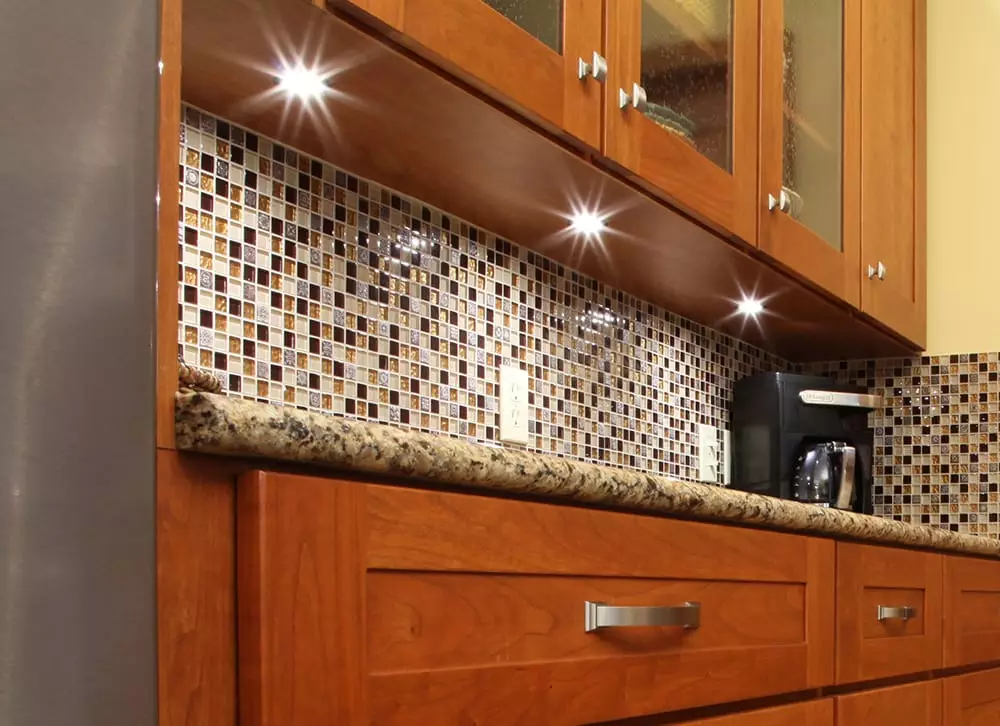
Why Task Lighting Matters
Tired of working under dim or uneven lights? Task lighting is your solution.
These fixtures direct beams into busy areas in your kitchen, such as countertops, tables, sinks, and stoves, reducing shadows to make food preparation considerably easier. They also make injuries less likely, as knives and cooking appliances become more visible.
Top Task Lighting Solutions
Preparing your favorite meals becomes easier with task lights shining on your workspace.
- Under-Cabinet Lighting: This option, usually in the form of LED strips, directs light from beneath wall cabinets to illuminate the entire length of your countertop.
- Pendant Lights: In addition to looking great, pendant lights brighten kitchen islands and other workspaces in the middle of your kitchen.
- Recessed Lighting & Puck Lights: These fixtures shine directly over small, specific areas in your kitchen—perfect for featuring certain appliances.
Tip #3: Elevate with Accent Lighting
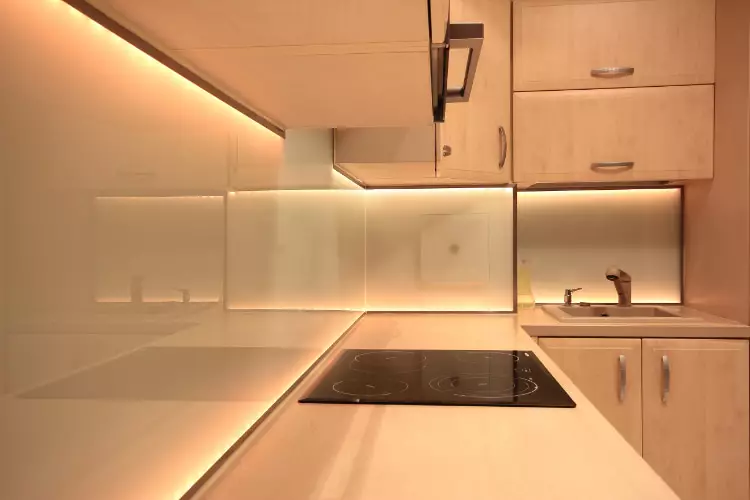
The Role of Accent Lighting
Accent lighting is an excellent addition to your kitchen when you want to showcase architectural features or give the space some personality.
Do you have a prized painting? Picture lights will make it pop out. Meanwhile, under-cabinet LED strips help highlight intricate tile backsplashes that add warmth to your kitchen.
Accent Lighting Ideas
Accent lights not only brighten your kitchen but also provide additional mood to complement ambient lighting, making the room more inviting and visually interesting.
- Interior Cabinet Lights: If you have glass-front cabinets displaying valuable china and other collectibles, interior cabinet lights are an excellent way to spotlight them.
- Toe-Kick Lighting: Installing LED strips underneath your cabinets is a stylish and functional way to provide nighttime navigation, similar to a theater or museum.
- Strip & Rope Lights: These are flexible lines of light that can trace islands, shelves, racks, and even curved surfaces.
Tip #4: Add Smart & Modern Features
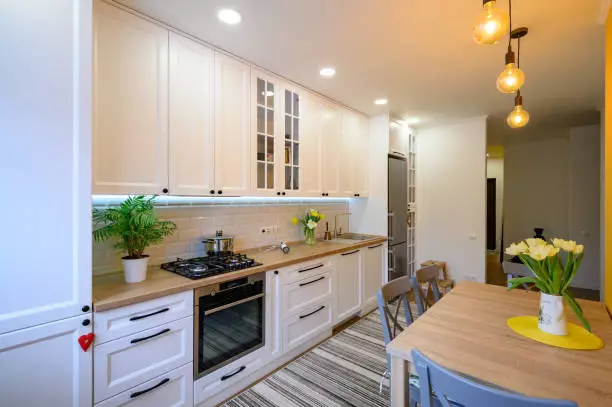
Dimmers & Scene Controls
While bright lights aid food preparation, being able to dim them when entertaining guests helps keep the space appealing. Dimming switches make this feature possible. Smart lighting also allows endless customization via an app, from brightness to colors.
Motion Sensors & Automation
Another way to transform your kitchen lighting is via automation. Motion sensors could switch on non-ambient lights whenever someone walks into the kitchen. Likewise, daylight sensors turn lights on at dusk, preparing your kitchen for dinnertime.
Smart-Home Integration
Make lights more hands-free by integrating them with your smart home system. Alexa, Google Home, and similar technologies allow you to control your entire lighting setup via an app or specific voice commands, making light management much more convenient and effortless.
Tip #5: Plan Your Lighting Layout
Divide Your Kitchen into Zones
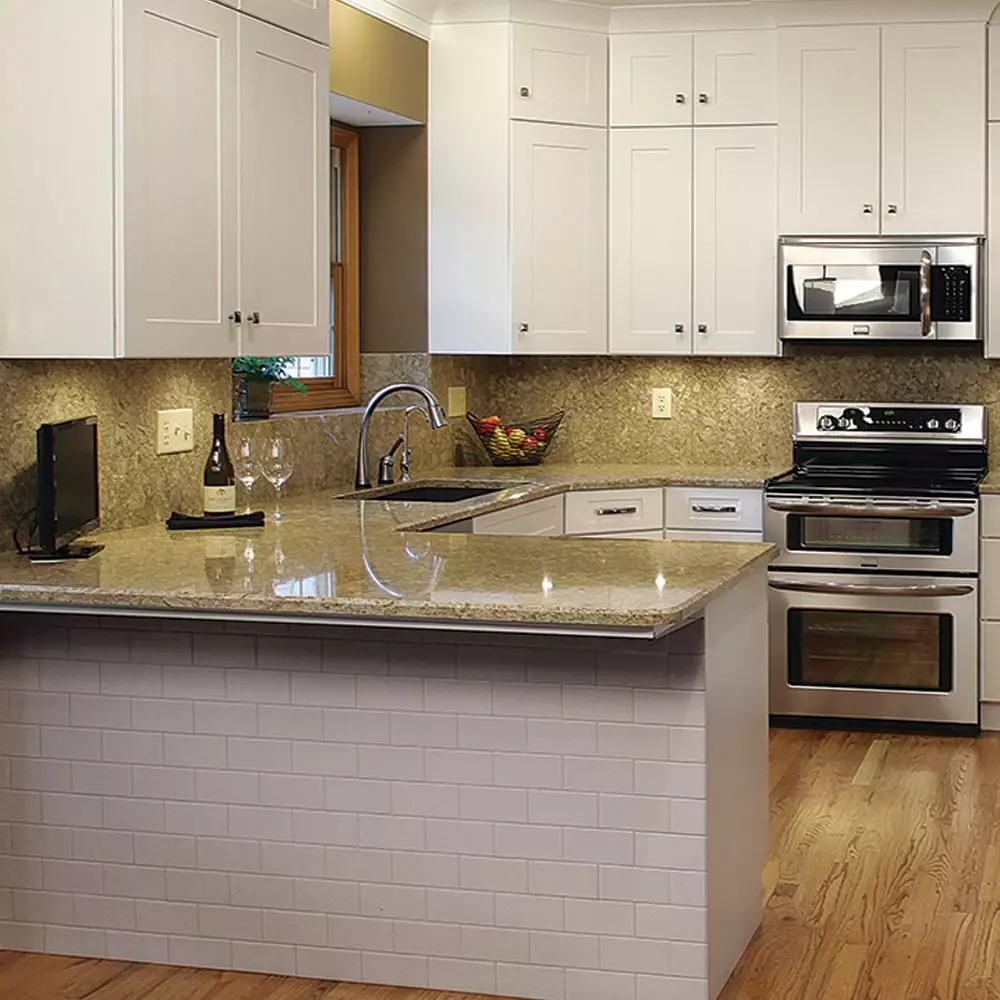
Map out your kitchen before choosing and installing lighting fixtures. Separate it into cooking, food preparation, dining, and display areas, then determine the lighting types you need: chandeliers or pendant lights above dining tables, task lights in workspaces, and so on.
Layer for Balance
While each lighting type has a distinct purpose, combining them is more beneficial than the sum of their parts. For example, you could install under-cabinet accent lights beside task lights that turn on when preparing food to make your countertops more visible and safe.
Illuminate Your Dream Kitchen with American Wood Reface
Transforming your kitchen lighting means being smart about your lighting choices. You wouldn’t want your kitchen to look too bright or too dim. So, use these various lighting types and smart features to find the middle ground where your kitchen becomes beautiful and functional.
We’re here to help. In addition to our reliable cabinet refacing services, American Wood Reface offers customized kitchen lighting to brighten your daily life.
